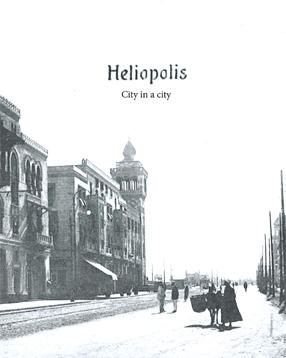Heliopolis
City in a city

Students: Jakub Gardolinski, Ge Men
Location: Cairo
Date: October, 2010
Type: Research project, student work
The vision of Belgian financier Edouard Empain, a railroad magnate with mortgage banking operations and several major transporation and civil engineering projects in Egypt, Heliopolis, with the land concession granted in 1905 to the Heliopolis Oasis Company, is built by Belgian, French and British architects. Its construction as a private enterprise by a foreign capitalist without state support and its location in the desert took from the models of the garden cities at the time of its inception—such as Letchworth, by Unwin and Parker in 1903 implementing the theories of Ebenezer Howard—as well as being the forerunner for contemporary satellite cities.
Empain also founded the Cairo Electric Railways, and was given the concession by the British colonial governemnt to operate the public transit between Cairo and Heliopolis. With the construction of the first tram line of 10km from Cairo city center, inter-sectoral cross subsidisation—revenues from the tramline support the real estate development—allowed for the quick construction of the area and lead to its incorporation into Cairo city in 1908, providing public services to the residents.
With neo-Maghreb Islamic facades and westernized layouts, the buildings, with original programs including tourist facilites, golf course, amusement park and race track, and contemporary ones such as the new malls and entertainment comoplexes, Heliopolis, currently with a population over a million, shows its resilience during the 1960s post-revolution shift of power, where the high presence of military officers and its proximity to the then-to-be-developed area of Madinat Nasr insured its survival as as the new locus of power. Today, extensions into the desert of New Cairo City, New Heliopolis, and the many others, has upheld the important position that Heliopolist plays in the historic development of Cairo. This topic will look at how Heliopolis was conceived, evolved and manifests the changing ideas of urbanism in spatial production.
Download the Book PDF

